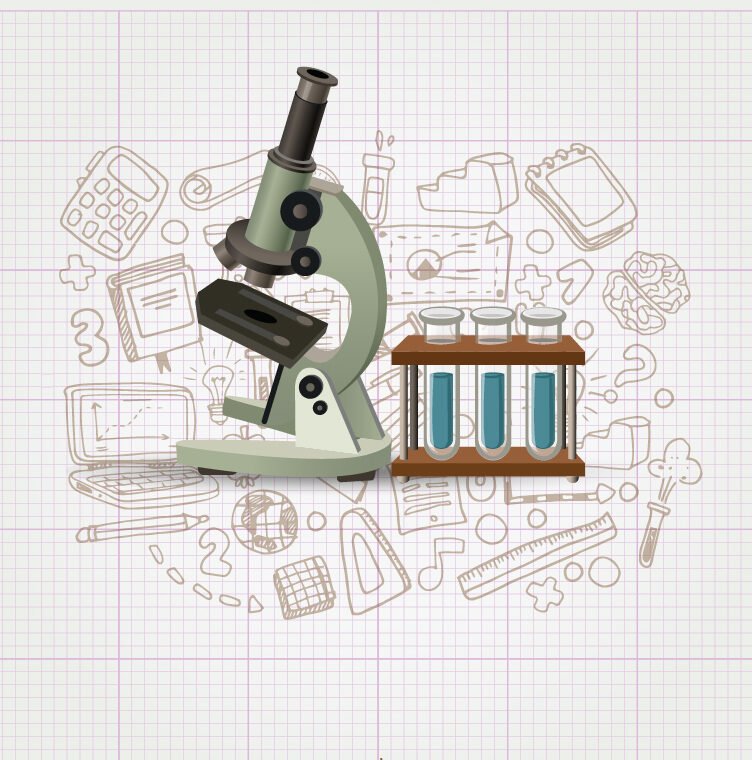The online chemical solution simulations on this page allow us to visualize how a solution is produced. We will discover what the solute and solvent are, what the concentration of a solution is, and the different ways to measure it.
What are chemical solutions
Chemical solutions are homogeneous mixtures of two or more substances, where one of them is dispersed in the other, forming a dispersed phase and a dispersing phase. The dispersed phase is called the solute and the dispersing phase is known as the solvent. Chemical solutions can be solid, liquid or gaseous, depending on the state of aggregation of the substances involved.
Concentration of a chemical solution
The concentration of a chemical solution indicates the amount of solute present in a given amount of solvent or total solution. It is a way of expressing how “strong” or “diluted” a homogeneous mixture is, and is fundamental in many chemical processes, both in the laboratory and in industry. There are different ways to express the concentration of a chemical solution, among which the following stand out:
Percentage by mass (% m/m)
Indicates the grams of solute per 100 grams of solution. Example: a solution with 5 g of salt in 100 g of water has a concentration of 5% m/m.
Percentage by volume (% v/v)
Expresses the milliliters of solute per 100 mL of solution. Very common in liquid mixtures, such as alcohol in water.
Molarity (M)
Defined as the moles of solute (n) dissolved per liter of solution.
M = n / V
This unit is especially useful in stoichiometric calculations of chemical reactions.
Molality (m)
Moles of solute per kilogram of solvent. It is useful when precision is required in temperature variations.
Molar fraction (χ)
This is the ratio between the moles of a component and the total moles present in the solution. It is commonly used in physical chemistry.
The concentration of a solution directly affects its physical and chemical properties, such as:
- The boiling point (increases with concentration – ebullioscopic effect).
- The freezing point (decreases with concentration – cryoscopic effect).
- Osmotic pressure (important in biology and cellular processes).
- Electrical conductivity, especially in electrolyte solutions.
- These variations are known as colligative properties and depend on the number of solute particles present, not their chemical identity.
Preparation of a chemical solution
There are different ways of preparing a solution. The most common is the solid-liquid solution, where the solute is added to the solvent and stirred until it is completely dissolved. Liquid-liquid and gaseous-liquid solutions can also be prepared using techniques such as stirring, heating or using specific apparatus such as ultrasound.
Saturated and supersaturated solutions
Some solutions have special properties, such as saturated solutions, which contain the maximum amount of solute that can be dissolved in a given amount of solvent at a given temperature. If more solute is added, it will not dissolve and a precipitate will form. On the other hand, supersaturated solutions contain a larger amount of solute than can normally be dissolved, and are more unstable and can easily precipitate.
Importance of chemical solutions
Solutions are of great importance in chemistry and in many aspects of our daily lives. For example, salt water is a common solution found in the oceans and seas. Also, many medicines are solutions in which the active ingredients are dissolved in a suitable solvent.
Explore the exciting STEM world with our free, online simulations and accompanying companion courses! With them you'll be able to experience and learn hands-on. Take this opportunity to immerse yourself in virtual experiences while advancing your education - awaken your scientific curiosity and discover all that the STEM world has to offer!
Chemical solution simulations
- Molarity
- Concentration
- Dissolution
Molarity
What determines the concentration of a solution? Learn about the relationships between moles, liters, and molarity by adjusting the amount of solute and the volume of solution. Change the solutes to compare different chemicals in water.
File
Concentration of a chemical solution
Observe the color change of your solution as you mix the chemicals with water. Then check the molarity with the concentration meter. What are all the ways you can change the concentration of your solution? Change the solutes to compare different chemicals and find out how concentrated it can be before you reach saturation!
File
Dissolution Process
This simulation allows us to select different compounds and observe how they dissolve in water.
Giants of science
“If I have seen further, it is by standing on the shoulders of giants”
Isaac Newton

Gilbert Newton Lewis
–

John Dalton
–
Become a giant


Basic Steps in Magnetic Resonance



Basic Analytical Chemistry



Big Bang and the Origin of Chemical Elements



Preparing for CLEP Chemistry: Part 1



Pre-University Chemistry


























